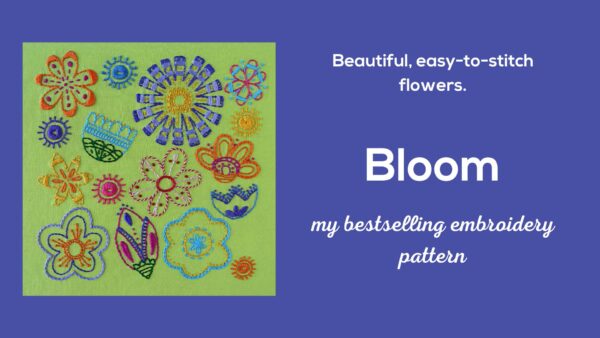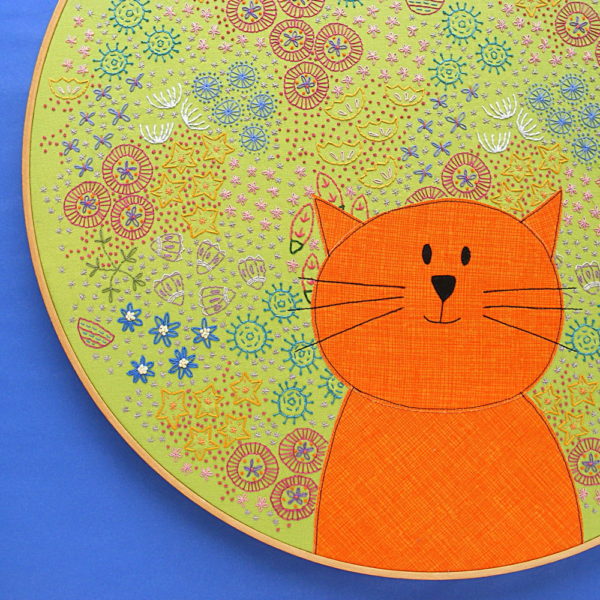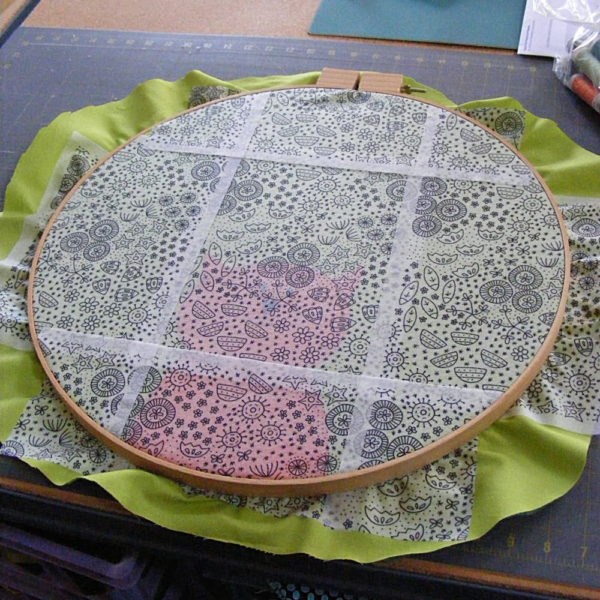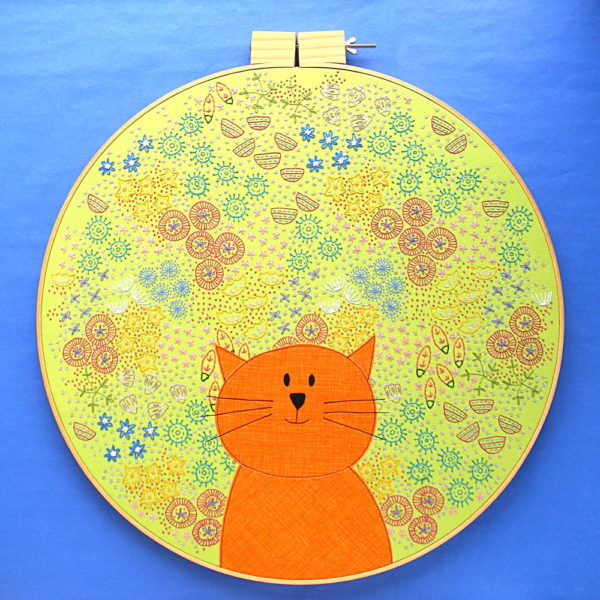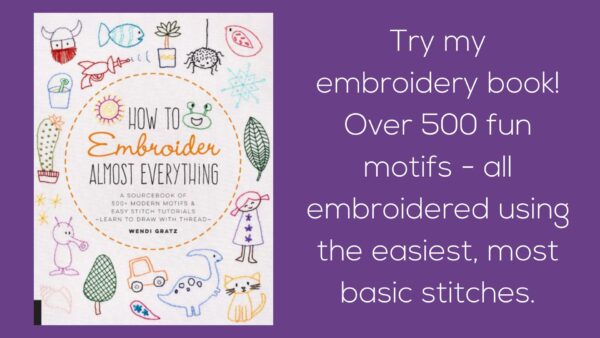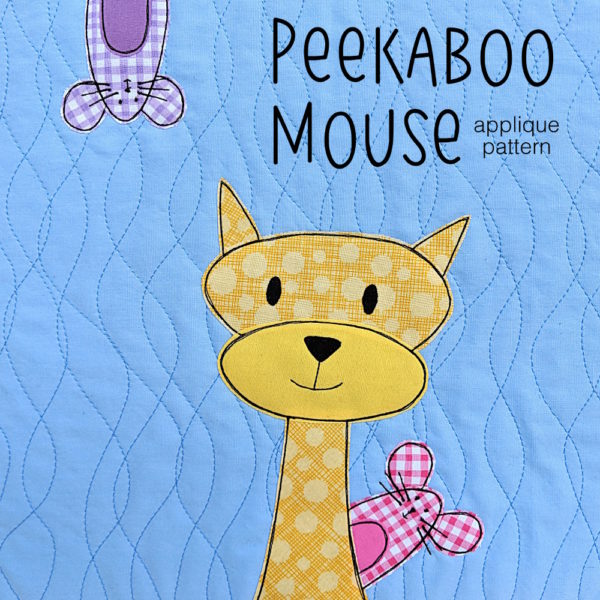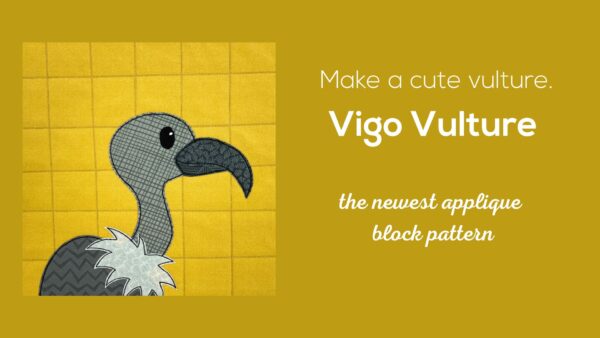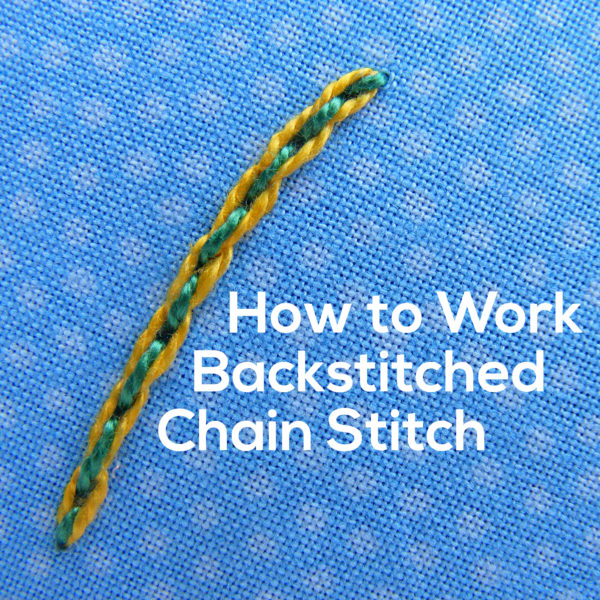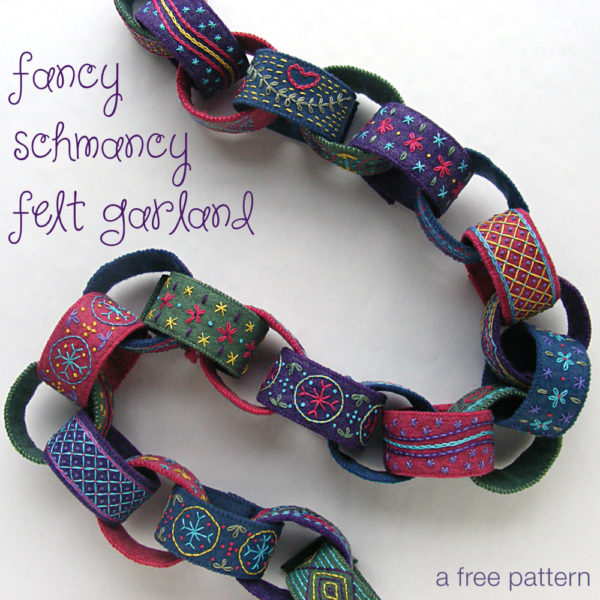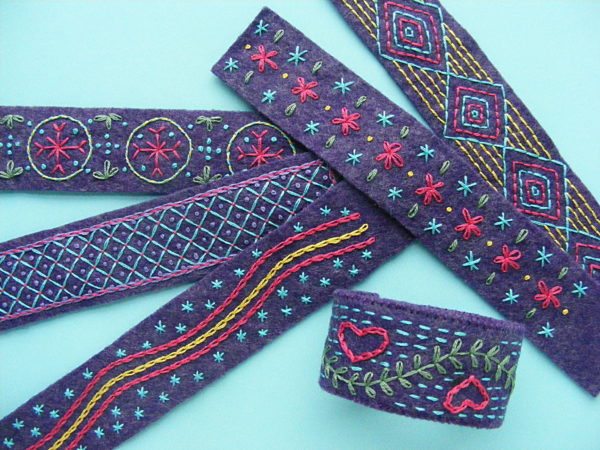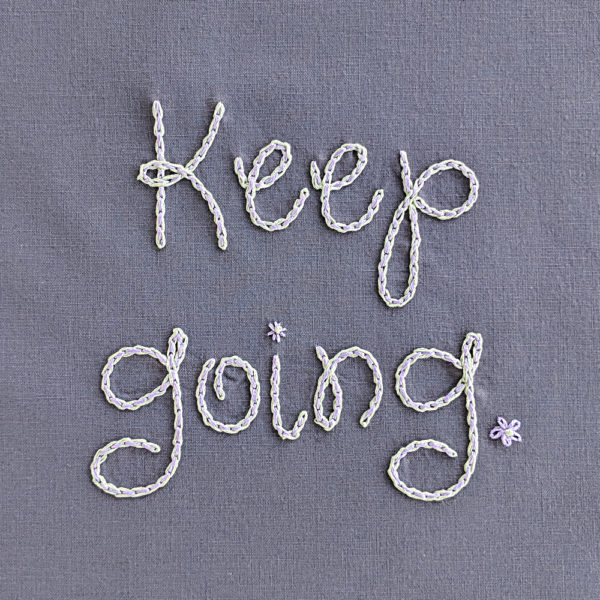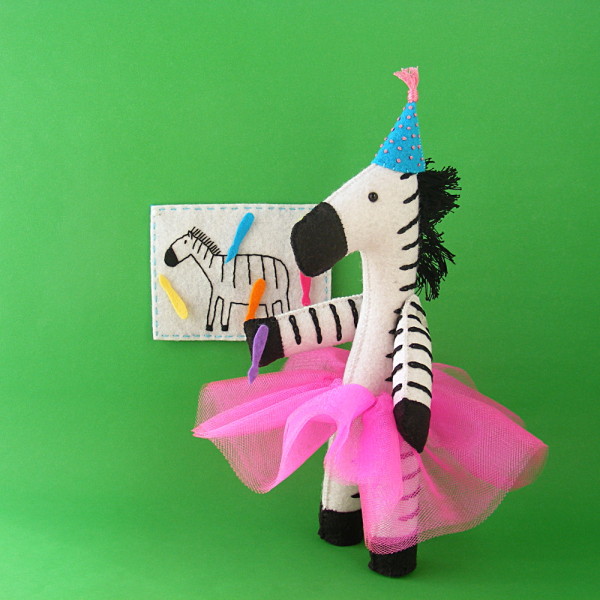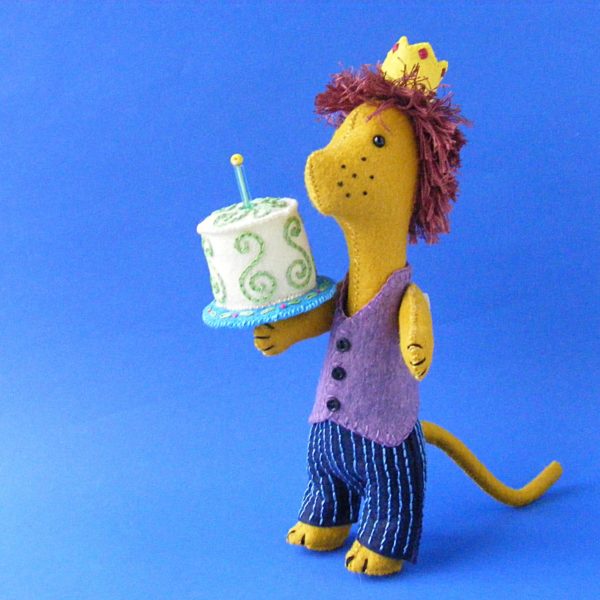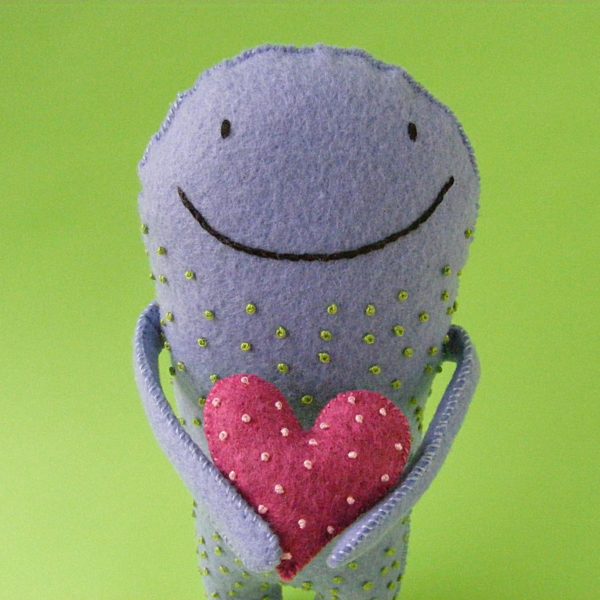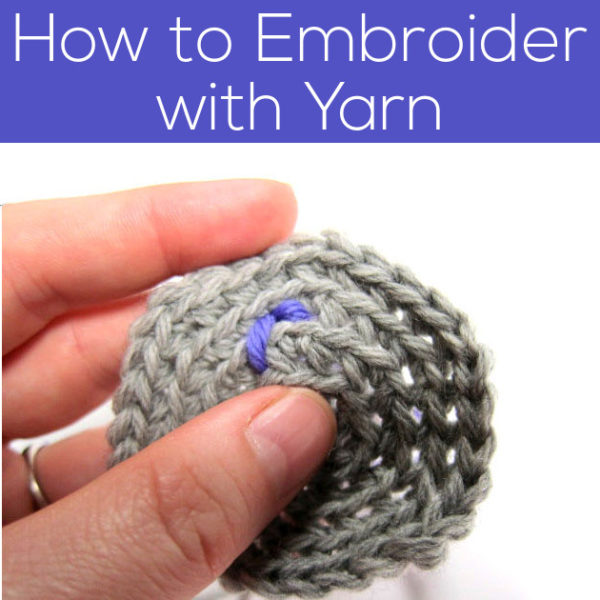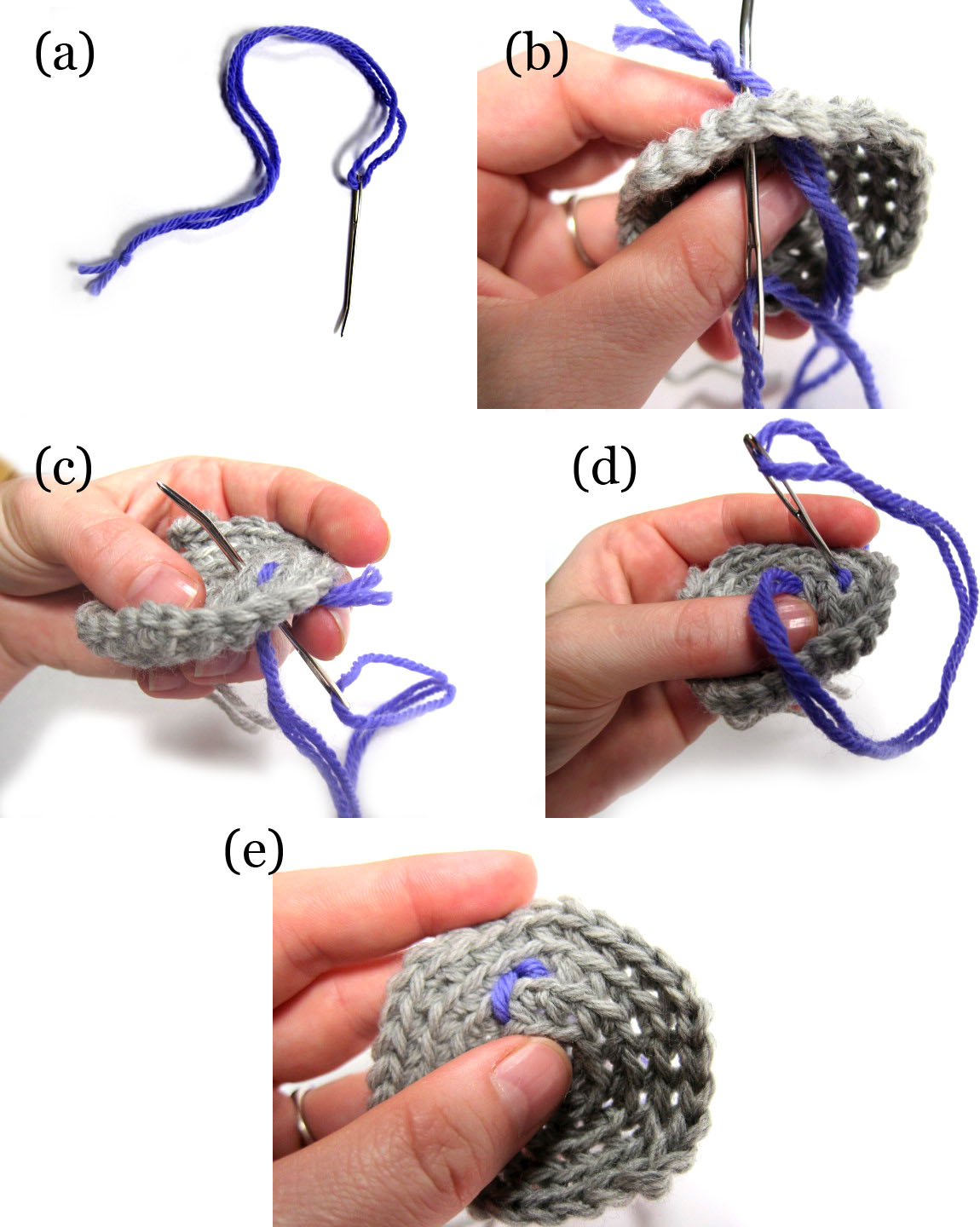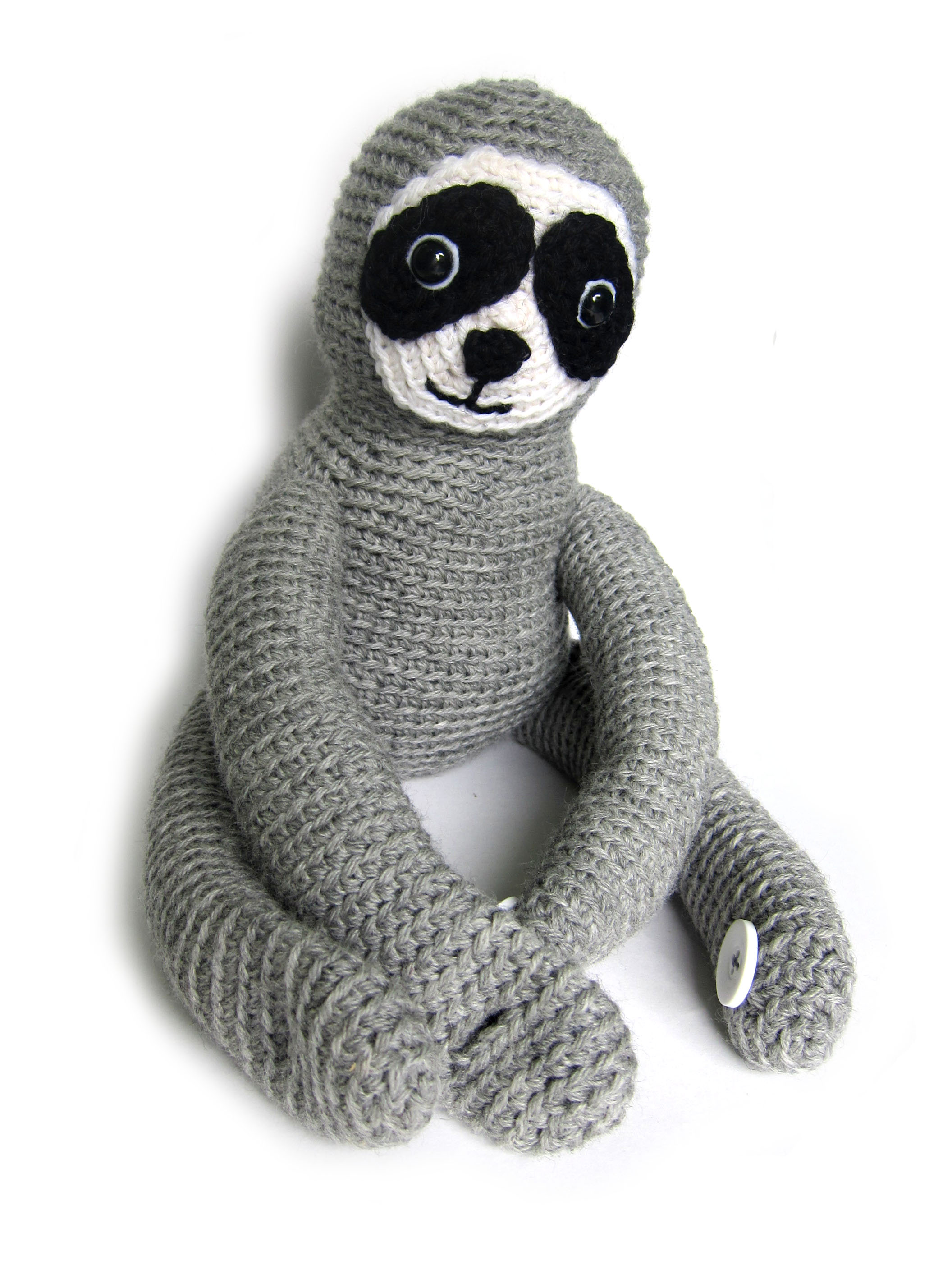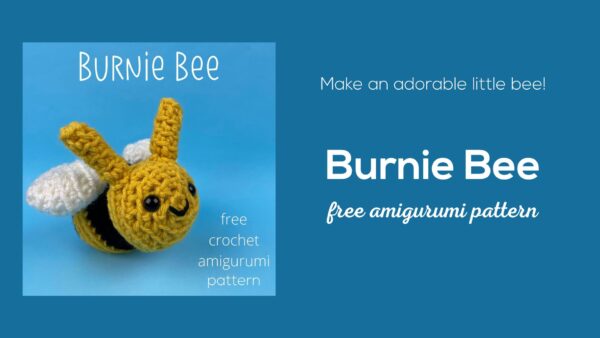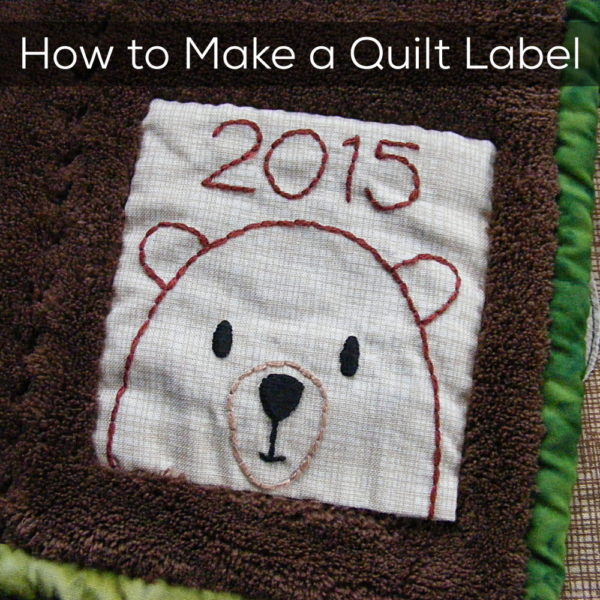
It’s easy to add a quilt label to your creation – and it’s fun to make it coordinate with the designs on the front of the quilt.
I like my labels to be about 4 inches wide. To resize any block design to fit in that size you print it at 40% of the original size. Easy peasy!
The bear you see on this label is one of the blocks from this Woodland Critters quilt pattern.

Cut a piece of fabric big enough for the full four inch square to fit flat in a hoop. A seven inch square of fabric should work just fine.
Stitch the design on your quilt label. I used 4 strands of thread and two simple stitches – backstitch for all the lines, and satin stitch for the solid eyes and nose.
If you want to add a date – or maybe a name – there’s a free alphabet embroidery pattern here – with letters that are relatively simple to stitch, with no serifs, curlicues, or extra-tight curves. 🙂
When you finish stitching, trim the fabric so there’s about an extra inch all the way around the part you want to show as the quilt label. Fold about 1/2 inch under on each side and press.
There’s a video here showing how to press your embroidery without smooshing the stitches.
Position the label where you want it (I always put mine in the lower right corner) and pin or glue it in place to hold it secure while you stitch it.
Stitch the label to the quilt back all the way around the edge, being sure to only stitch through the quilt backing. Don’t let your stitches go through to the front of the quilt. I like to use ladder stitch.
That’s it!
It doesn’t take long and it’s a really nice finishing touch. 🙂

Here are all my posts about how to bind and finish your quilt.
Finished with this topic?
Return to the Let’s Make a Quilt main Table of Contents.
Move on to more info about other things (not quilts!) that you can make with your applique patterns.
Happy stitching!






